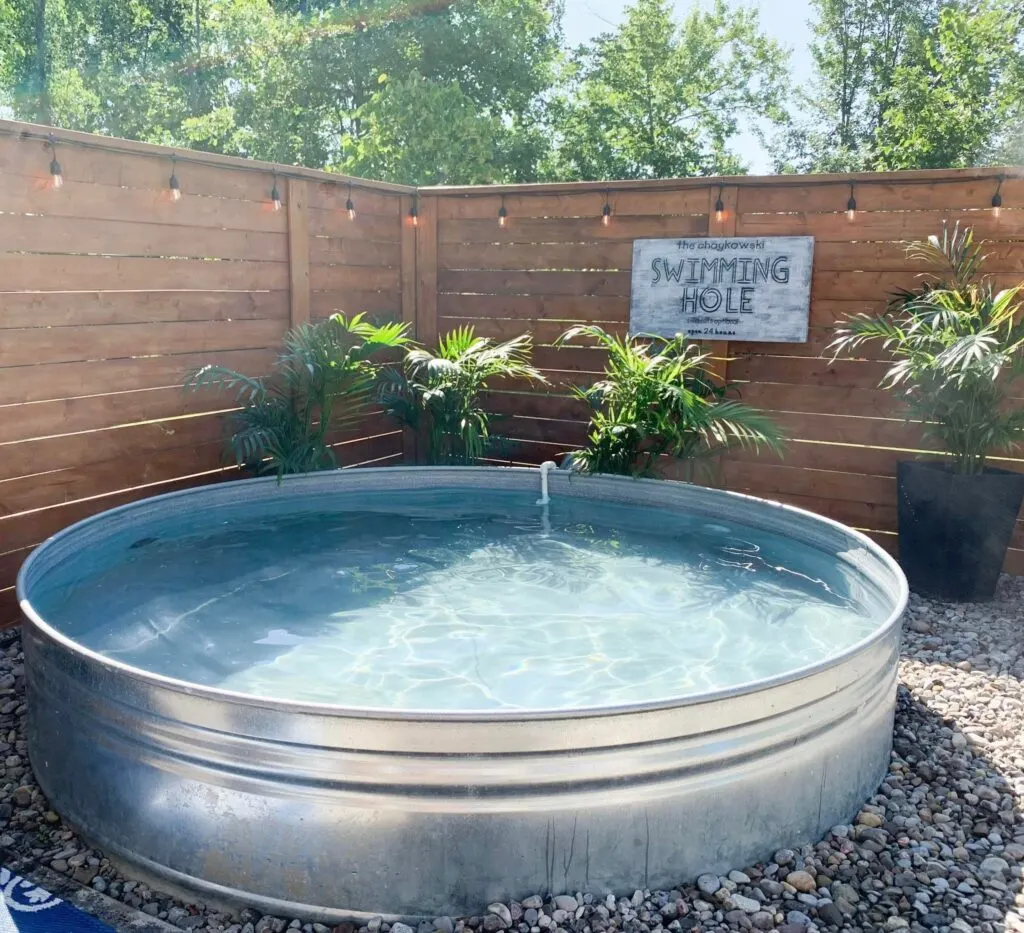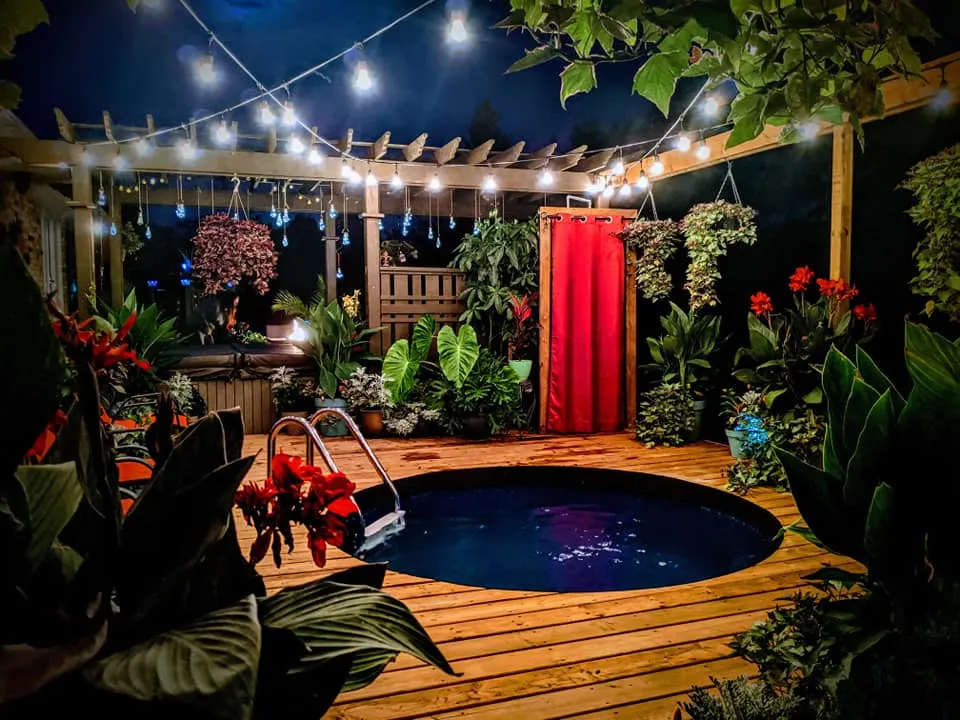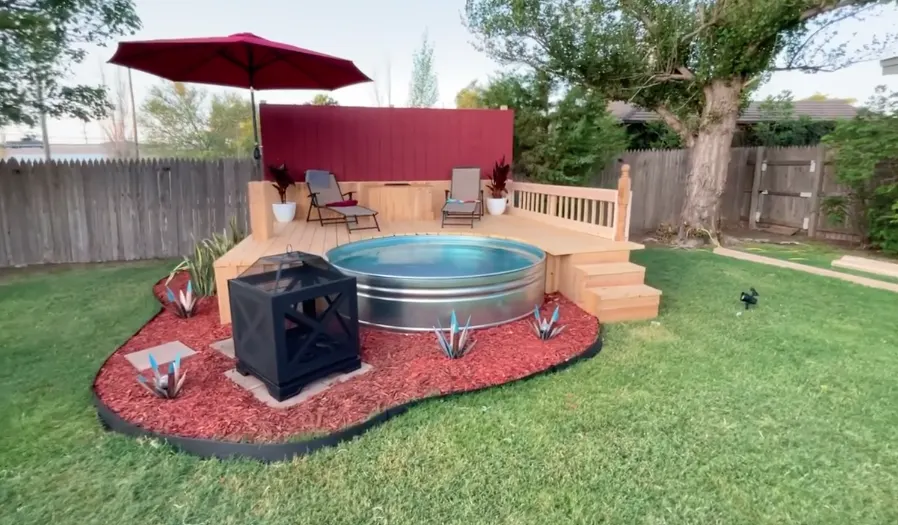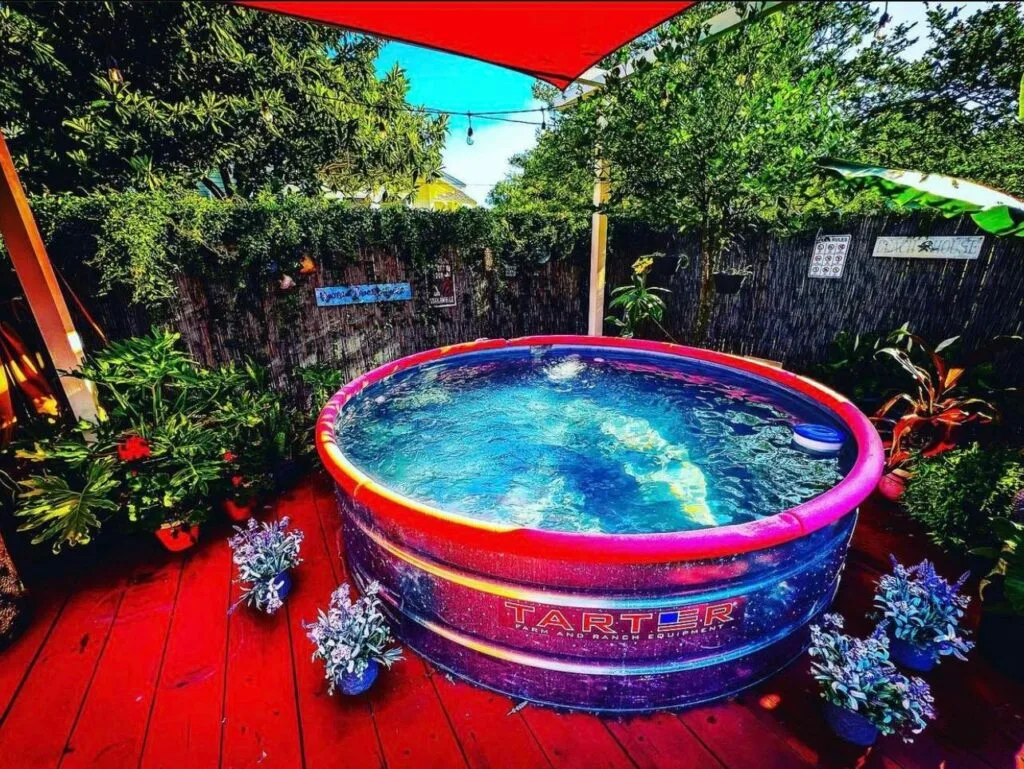There are over 10.4 million residential pools across the country, and 40% to 49% are above ground. As such, this indicates an increasing trend towards more affordable pool options at home.
If you’re looking for a pool that’s easy on the budget, a stock tank pool is a perfect option. In the summer, these pools are popular because of their affordability, ease of maintenance, and ability to keep you cool in the heat.
That being said, how big can a stock tank pool really get? For a pool alternative, you might want to consider getting a pool that allows you to swim and can accommodate your friends and family for fun backyard gatherings.
Let’s go over the variety of stock tank pool sizes and depths, as well as a comparison of stock tank pools with other types. This way, you can make the right choice that will suit your needs.

Page Contents
How Big/Deep is a Stock Tank Pool?
Stock tank pools are typically round or oval in shape and have a depth of two feet, but their diameter can range from 3 to 10 feet.
With that in mind, you can expect the larger stock tank pool sizes of around 8 to 10 feet in diameter to be able to accommodate 4 to 10 people. Since stock tank pools are compact in size, they would be a great addition to a barndominium in the city.
That said, bottomless stock tank pools also exist. In contrast to regular stock tanks, these tanks do not have a bottom.
As such, they need to be sealed or protected with a sealant or barrier, usually a concrete slab or bentonite clay. There are some that can go as deep as four feet.
Stock Tank Pool vs. In-Ground Pool Size
While a stock tank pool is shallow and is great for a quick soak, there is no limit to the size and depth of an in-ground pool, depending on the budget and preferences of the homeowner.
The depth of an in-ground pool is generally only up to eight feet, usually with a gradual slope. However, the size and shape may vary as compared to the circular or oval shape that stock tank pools can offer.
On the market, the standard size of a swimming pool is 6×3 meters, but you can customize almost any in-ground pool you want. In-ground pool types can range from a rectangular pool to a lap pool, a freeform pool, a custom-shaped pool, and many more.

Stock Tank Pool vs. Other Above-Ground Pool Size
It is well known that above-ground pools are a popular option for backyard swimming. While stock tank pools arguably offer the most affordable option, other above-ground pool types may offer their own benefits, especially with regard to their size.
Above-ground pools are usually only rectangular, oval, and circular. Nonetheless, a variety of types may be available, including steel, resin, hybrid combinations of steel and resin.
You may also find semi-in-ground “radiant” pools that are considered the most customizable type.
The depth of some above-ground pools can reach four feet, compared to 2 feet for a standard stock tank pool. Also, the size can vary from 10 to 33 feet in diameter, making it the best choice for larger families.

Is a Stock Tank Pool Still Worth It?
Looking for a nice soak to cool off from the heat with your loved one? Or are you planning to swim laps and play pool games with your family? Your choice will ultimately be determined by the purpose of the pool you intend to have in your home.
As far as cost is concerned, a stock tank pool can be installed in your home for as little as $500. You should be aware that owning an in-ground pool involves more time, money, and dedication, with prices reaching upwards of $30,000.
Depending on the size and preferences of the pool, an above-ground pool can also cost a few thousand dollars.
In terms of maintenance costs, heaters, filtration, as well as water and energy consumption, the simplicity of a stock tank pool is unmatched.
Although stock tank pools require a certain amount of maintenance, the overall cost of owning one is a fraction of what it would require with other types of pools.

Final Thoughts
A stock tank pool has a depth of two feet and a diameter ranging from 3 to 10 feet. There would be enough room for three to ten people depending on the diameter.
The other types of pools indeed provide a greater variety of sizes, depths, and shapes.
Nonetheless, the overall appeal and cost of getting a stock tank pool is definitely worth the investment, especially if all you’re looking for is a simple soak on a hot summer day or a fun place to hang out with friends and family.
Speaking of having people over, check out the benefits of having a guest house with your barndominium. In fact, barndos, or “barn condominiums” that allow for open-space living, may actually be a cheaper alternative to regular housing.
Noah Edis is a passionate staff writer at Barndominium Life, a leading online resource for all things barndominium. With years of experience in the writing industry, Noah has made a name for himself as a skilled storyteller and a knowledgeable authority on the topic of barndominiums.
Noah’s interest in barndominiums began when he stumbled upon the concept while researching alternative housing options. Intrigued by the rustic charm and functionality of these converted barns, he soon became obsessed with the idea of living in one himself. He spent countless hours researching the construction, design, and decorating aspects of barndominiums, and soon became an expert on the topic.
As a staff writer at Barndominium Life, Noah enjoys sharing his knowledge and passion for these unique homes with others. He has written numerous articles covering a wide range of topics, from the history of barndominiums to the best ways to decorate them. Noah’s writing is informative, engaging, and always on-trend, making him a valuable asset to the Barndominium Life team.
Noah is a graduate of the University of British Columbia, where he earned a degree in English Language and Literature. When he’s not writing about barndominiums, he can be found exploring the great outdoors, trying new restaurants, or spending time with his family and friends. Noah is dedicated to his craft and is always striving to improve his writing skills and knowledge of the barndominium lifestyle.
Connect with Noah on LinkedIn
